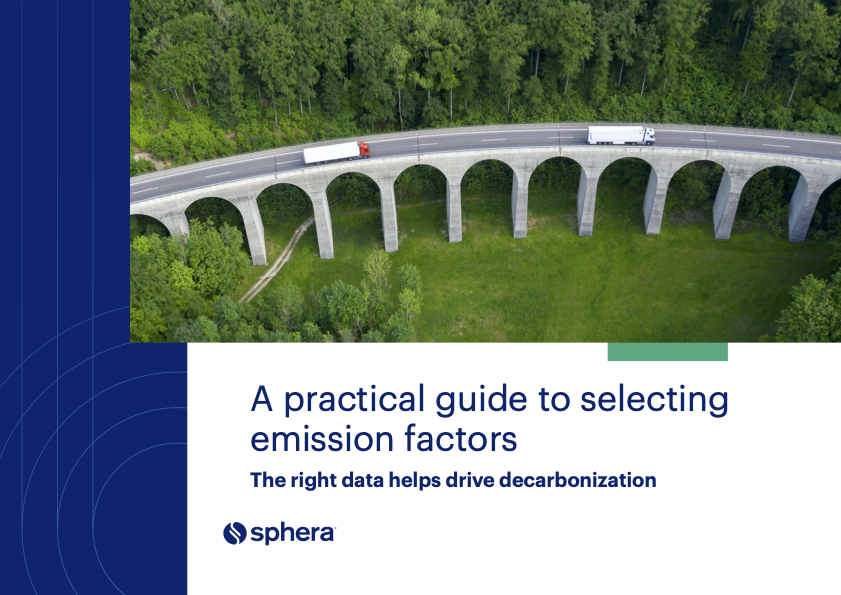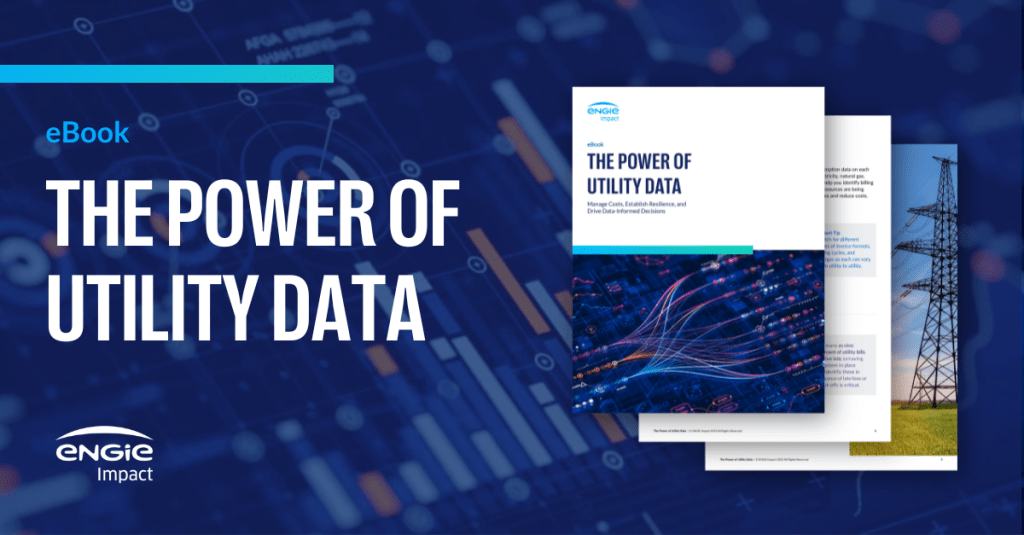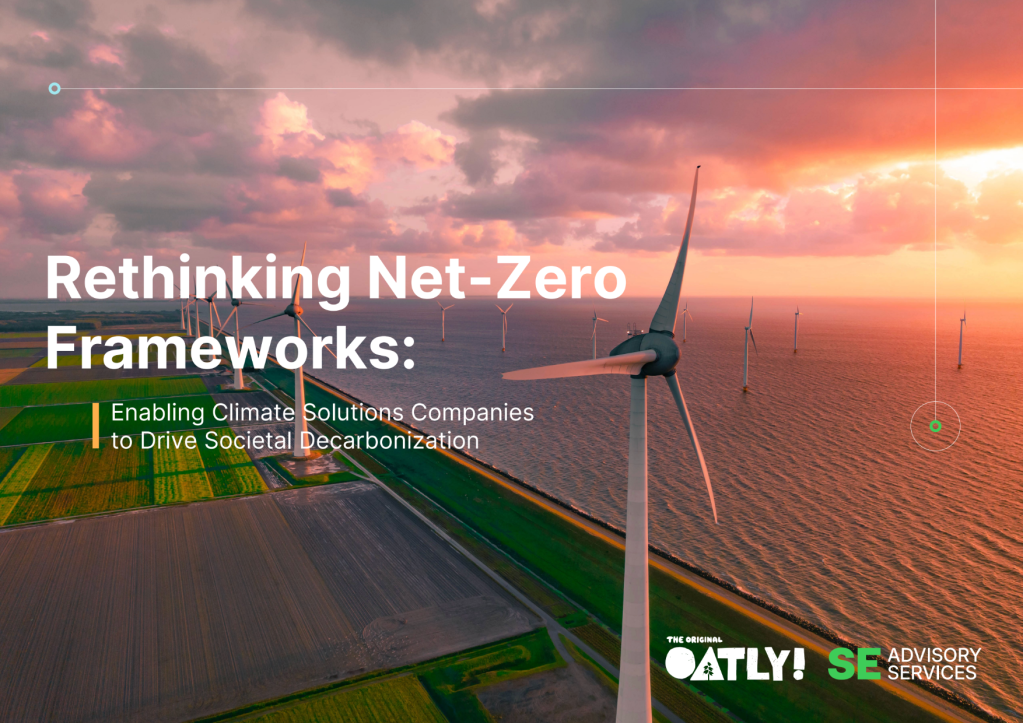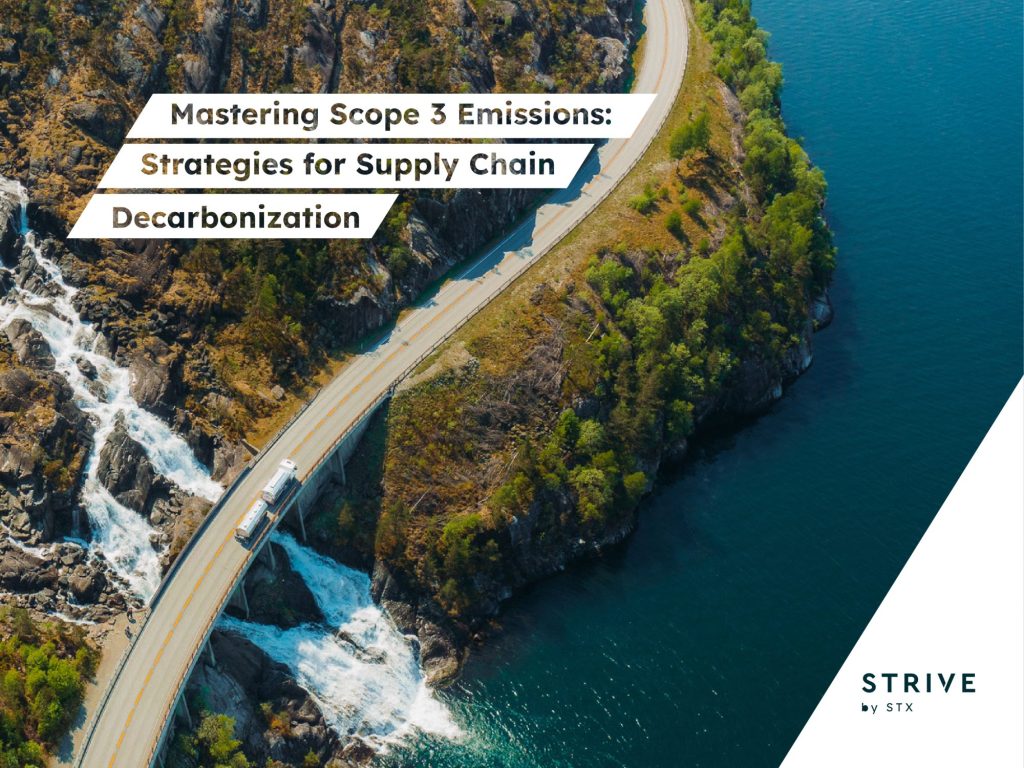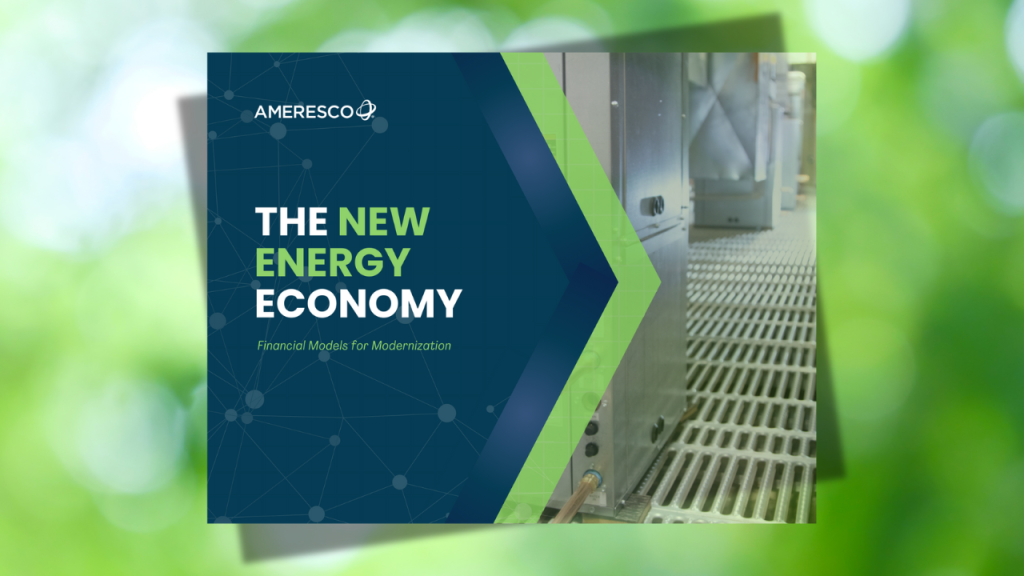Energy & Atmosphere Backgrounder
The Big Picture
Energy prices and atmospheric temperatures are rising—putting energy efficiency on everyone’s front burner as a smart environmental and business practice. Reducing energy consumption — particularly from nonrenewable sources — will reduce greenhouse gas emissions and operating, manufacturing, and consumption costs.
The Context
Buildings consume approximately 37% of the energy and 68% of the electricity produced in the United States annually, according to the U.S. Department of Energy. The good news is that by increasing efficiency, businesses and industry can also save money. Energy-management practices and energy-efficient equipment can reduce a plant’s energy costs by at least 20%—a net savings opportunity worth more than $11 billion by 2010 for the U.S.
But that’s not the whole story. Carbon-dioxide emissions from energy consumed by the commercial sector have jumped nearly 30% since 1980, the fastest rate of increase of any sector in the United States. Industry is another big emissions culprit: In 1997, industrial users burned fossil fuels to run motors, generate heat, operate machinery, and light buildings, consuming 37% of total U.S. energy and sending approximately 1.5 billion metric tons of emissions into the atmosphere — a dangerous brew of carbon-dioxide, methane, and nitrous-oxide gases.
Alternative energy appears the obvious savior. In Europe, renewables comprise the fastest growing segment of the energy market. Group Planning at Royal Dutch/Shell says it is “highly probable” that renewable energy will meet at least half of the world’s energy needs in the next 50 years.
To get there, alternative energy must be further developed and made available to consumers at a competitive cost. Businesses can begin to utilize renewable energy in areas such as heating and cooling, vehicles, lighting, and hot-water systems—and in doing so, create market demand. In short, the private sector stands to play a vital role in the energy revolution.
In the meantime, implementing energy-efficiency measures offers obvious payback for companies seeking relief from rising costs.
Getting Down to Business
Energy-efficient practices range from simple to involved: from shutting off equipment when not in use (30% to 40% of personal computers and printers are left running at night and on weekends and are idle as much as 90% of the workday) and installing efficient light fixtures to finding a use for waste heat or reducing boiler blowdown.
- Ingleside Cogeneration L.P. operates a 440-megawatt cogeneration facility in Texas to provide power for the adjacent OxyChem and DuPont chemical facilities. Excess power is sold to nearly 75,000 homes and businesses. The high-efficiency, low-emissions facility will emit two million metric tons less carbon dioxide per year than a coal-fired steam and power generating facility.
- The Amtrak passenger station in Bloomington, Ill., combines a 2.4- kilowatt rooftop solar array with extensive efficiency measures, using 75% less energy than a comparable station. Efficient lighting reduces lighting energy more than 70%. Passive solar heating, thorough insulation and outdoor shading cut climate control needs. Savings of $20,000 a year paid for the extra costs in about five years.
- Henningsen Cold Storage Company’s award-winning 50,000-square-foot refrigeration facility in Gresham, Oregon uses 58% less energy than a comparable conventional facility, saving more than one million kilowatt hours a year. The heavily insulated plant uses high-efficiency evaporators and condensers and a state-of-the art control system that improves quality control. Fast-acting doors on loading docks minimize energy losses. Bilevel lighting in individual rooms provides automatic dimming.
- SC Johnson headquarters building in Racine, Wisc., was designed for energy efficiency. Studies projected that the gross annual energy consumption will be approximately 73,000 BTUs per SF — about 60% less than the average for similar buildings. This reduced energy consumption will save SC Johnson nearly $100,000 per year, according to statistics for average new construction in Wisconsin.
- Ford Motor Co. was the first to install solar panels at an auto-manufacturing plant. Ford’s Bridgend Engine Plant in Wales produces electricity for the 108,000-square-foot facility — electricity that would have generated 4,400 tons of greenhouse gases had it been produced through nonrenewable means. Ford also uses landfill gas to provide electricity for the Wayne Stamping and Assembly Plant in Michigan; it diverts excess energy to Detroit Edison, the local utility.
- The M.D. Anderson Cancer Center in Houston, Texas, cut energy used for heat and cooling by 30 percent each for a total savings of $150,000 a year, about a quarter of the building’s annual energy cost.
Key Players
- Energy service companies provide service packages that typically include financing, installation, and maintenance of energy-saving capital improvements. Services are provided through performance contracts, which guarantee that payments will not exceed energy savings.
- Suppliers of energy-efficient equipment and services offer a wide range of options to exchange energy-intensive equipment with more efficient analogs. Many have products certified through a third-party program, such as the U.S. Environmental Protection Agency’s Energy Star label.
- Utility companies may work with industrial and commercial consumers to implement on-site energy-efficiency measures, which may decrease usage or shift a portion of it to off-peak hours and rates. The restructuring of the utility industry in many states allows energy users to choose service providers; many utilities entering the deregulated market offer energy from alternative, renewable sources such as wind, geothermal, and solar.
- Green power marketers are stepping up to compete against traditional power conglomerates and offer customers renewable-energy packages.
- Developers of solar, geothermal, and wind-energy technologies continue to refine and market their products.
- Federal, state, and local governments can mandate the deregulation of the utilities industry and offer economic incentives to facilitate the development of renewable energy. Government can also establish regulations such as requiring that a certain percentage of power be derived from renewable energy, as they have for their own facilities.
The LEED View
There are 17 points available in the Energy & Atmosphere category.
Prerequisite 1: Fundamental Building Systems Commissioning. Essential commissioning practices used to verify and ensure that fundamental building elements and systems are designed, installed, and calibrated to operate as intended.
Prerequisite 2: Minimum Energy Performance. Establish the minimum level of energy efficiency for the base building and systems.
Prerequisite 3: CFC Reduction in HVAC&R Equipment. Reduce ozone depletion.
Credit 1: Optimize Energy Performance. Achieve increasing levels of energy performance above the prerequisite standard in order to reduce environmental impacts associated with energy use. Up to 10 points are awarded (adjusted for new and existing buildings).
Credit 2: Renewable Energy. Encourage and recognize increasing levels of on-site renewable energy in order to reduce environmental impacts associated with fossil fuel energy use. Points are awarded for on-site renewable energy use at 5%, 10%, and 20% of the total energy use.
Credit 3: Additional Commissioning. A thorough best practices approach that expands on Prerequisite 1 and requires a commissioning authority that is independent of the design firms.
Credit 4: Ozone Depletion. Reduce ozone depletion and support early compliance with the Montreal Protocol.
Credit 5: Measurement and Verification. Provide for the ongoing accountability and optimization of building energy and water consumption performance over time.
Credit 6: Green Power. Encourage the development and use of grid-source, renewable energy technologies on a net zero pollution basis. Credit awarded for buildings that procure at least 50% of their electricity from renewable sources.
The Upside
Reduced long-term costs. Many energy-efficiency measures do not require additional first costs. Those measures that do result in higher first costs often create savings realized from lower energy use over the building lifetime, downsized equipment, reduced mechanical space needs, and utility rebates. Payback periods for many off-the-shelf energy efficiency measures are generally short.
Use of on-site renewable energy technologies can also result in energy cost savings, particularly if peak hour demand charges are high. Renewable energy can be generated on a building site by using technologies that convert energy from the sun, wind, and biomass into usable energy. On-site renewable energy is superior to conventional energy sources such as coal, nuclear, oil, natural gas, and hydropower generation, because of its negligible transportation costs and impacts. Utility rebates are often available to reduce first costs of renewable energy equipment. In some states, first costs can be offset by net metering, where excess electricity is sold back to the utility.
Pollution prevention. Energy efficiency and use of green energy technologies help businesses and industries meet regulations and decrease emissions.
Improved utility rates. By using less energy during peak times, businesses may be able to negotiate better rates with utilities.
Self-sufficiency. Companies that reduce their dependence on energy—or generate their own green energy—are provided some protection from fluctuations in the energy market and from crises over dwindling supplies of fossil fuels.
Reality Check
- Initial capital investment. Retrofitting, purchasing new equipment, or processing changes may require an initial capital investment. Typically, however, those costs are quickly recouped through cost savings. Installing renewable-energy conductors, such as solar panels, also requires an up-front investment, though such costs are falling.
- Tradeoffs in environmental quality. Building designers may experience tradeoffs between energy efficiency and indoor environmental quality. The provisions for energy efficiency should be balanced with the preferred levels of thermal comfort and ventilation effectiveness.
- Site design and location. The opportunity to employ energy-efficiency measures depends in part on the chosen project site and site design. Design of site lighting can have a significant effect on energy use.
Action Plan
Three fundamental strategies can increase energy performance: reduce demand, harvest free or sustainable energy, and increase efficiency. Here are some practical steps:
- Set a corporate energy policy: Make energy efficiency a part of operational procedures and a consideration in every business decision.
- Perform an energy audit to assess where energy efficiency can be improved. Energy audits can be performed by state or local energy offices, the U.S. DOE’s Industrial Assessment Centers, or in-house using assessment tools.
- Make general energy-efficiency improvements to facilities. For example, turn down the thermostat, insulate and block unused windows, turn off machines and equipment when not in use, install automatic lighting controls, use solar water heaters, seal heating and cooling ductwork, reduce hot water temperature, wrap hot water heaters in insulation, and replace air filters regularly. Finally, the efficiency of the building HVAC system should be maximized to meet the other building conditioning requirements.
- Harvest site energy by using free resources such as daylight, ventilation cooling, and solar heating to satisfy needs for space conditioning.
- Encourage employee participation and innovation. Educate employees on easy-to-follow energy-efficient practices and encourage them to come up with new energy-saving ideas. This may require challenging employees’ initial assumptions about energy use.
- Track energy costs both before and after energy improvements. You may want to separate energy costs from transportation costs.
- Optimize energy in manufacturing processes and activities. For example, capture and reuse waste heat, computerize heating and cooling systems, use high-efficiency motors, etc.
- Make use of net metering by contacting local utilities or electric service providers. Net metering is a metering and billing arrangement that allows on-site generators to send excess electricity flows to the regional power grid. These electricity flows offset a portion of the electricity flows drawn from the grid.
- Choose green power when possible. With deregulation, alternative energy companies are moving in with wind, solar, small hydroelectric, and geothermal generated power options. Choose renewable energy over nuclear or fossil fuels.
- Identify incentives and other assistance programs to offset the cost of installing alternative energy systems. Many states and the federal government offer financial incentives, tax breaks, and other tools to get more people using renewable energy; these incentives will not last forever.
- Design and specify the use of on-site nonpolluting renewable technologies to contribute to the total energy requirements of the project. Consider and employ high-temperature solar, geothermal, wind, biomass (other than unsustainably harvested wood), and biogas technologies.
Resources
- Energy Star Program
Voluntary labeling program identifies and promotes energy-efficient products. - Center for Energy Efficiency and Renewable Technologies
Promotes nonpolluting electricity-generation and transportation technologies. - Million Solar Roofs Initiative
The Million Solar Roofs Initiative will enable businesses and communities to install solar systems on one million rooftops across the U.S. by 2010. - Database of State Incentives for Renewable Energy
Promotes renewable energy in business, industry, and government by disseminating information on incentives, policies, programs, and regulations. - U.S. DOE Industrial Assessment Centers Program
Teams of engineering faculty and students conduct energy audits to help small and mid-sized manufacturers improve productivity, reduce waste, and save energy. - Alliance to Save Energy
ASE helps companies around the world adopt and successfully implement energy-efficient practices. - Business Energy Checkup
Calculates cost and energy savings of improving the efficiency of a building’s energy use. - Energy-Efficiency Best-Practice Program
U.K. government Web site for information, advice, and research on energy efficiency in the public and private sectors. - BuildingEnvelopes
Web portal aims to provide the building industry with practical information on designing energy-efficient buildings. - Virtual-Web Energy Demonstration Construction Center
Multimedia tools on energy-efficient building practices. - Greening the Building and the Bottom Line: Increasing Productivity Through Energy-Efficient Design
Report examines how energy efficiency in the workplace can increase employee productivity and provide economic benefits. - Energy Benchmark for High Performance Buildings
Evaluate the financial and performance benefits of new environmental technologies before spending a cent on equipment and installation. - Green-e Renewable Electricity Certification Program
Certifies renewable-electricity products and educates residential and business consumers on how to switch to green power.
Bottom Line
Energy consumption can be dramatically reduced through practices that are economical and readily achievable. Improving the energy performance of buildings lowers operations costs and reduces pollution generated by power plants and other energy- producing equipment. Most energy-efficiency measures present an excellent rate of return.
Over the long term, alternatives to fossil fuels make obvious sense—but haven’t yet fully penetrated the marketplace. As large consumers of electricity, heat, and fuel, businesses and industry should be at the head of the line requesting alternative energy from utilities and advocating for utility deregulation. Those who do won’t be left in the dark and cold when our supply of fossil fuels is exhausted.


